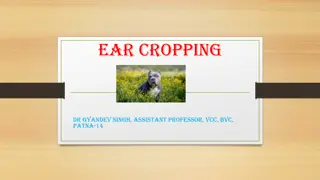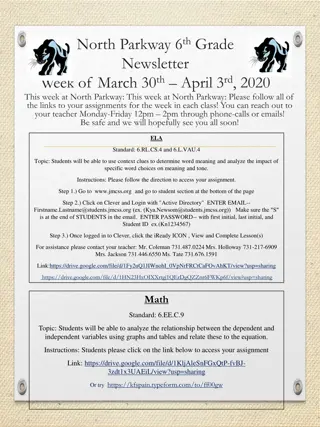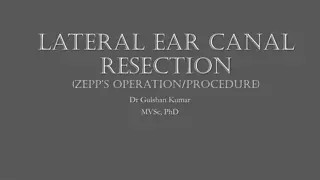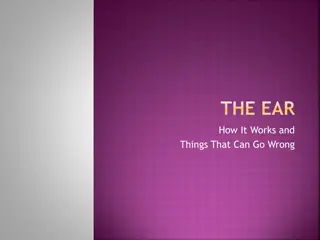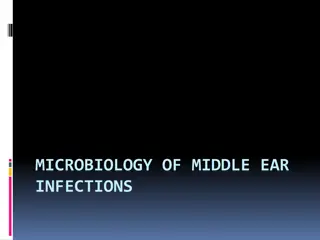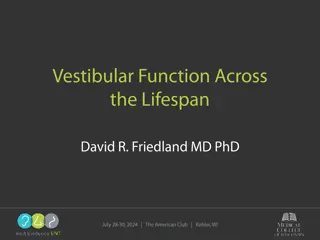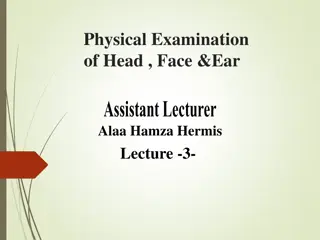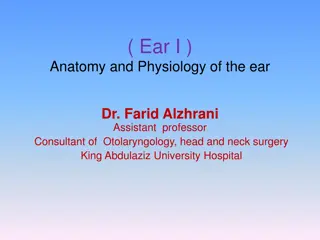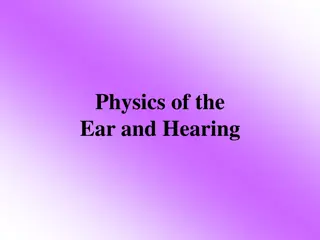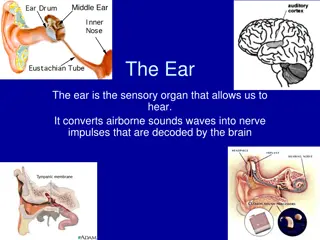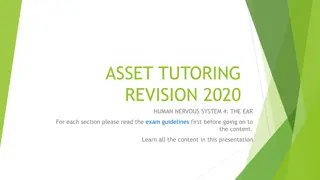Understanding How the Ear Works - A 6th Grade Science Guide
The ear is a complex organ divided into three main parts: the outer ear, middle ear, and inner ear. Each part plays a crucial role in the process of hearing. Vibrations travel through the outer ear canal, vibrate the eardrum, and pass through the tiny bones of the middle ear to reach the cochlea. Hair cells and fluid in the cochlea are activated, sending electrical signals to the brain through the auditory nerve, enabling us to hear.
Download Presentation

Please find below an Image/Link to download the presentation.
The content on the website is provided AS IS for your information and personal use only. It may not be sold, licensed, or shared on other websites without obtaining consent from the author. Download presentation by click this link. If you encounter any issues during the download, it is possible that the publisher has removed the file from their server.
E N D
Presentation Transcript
How the Ear Works 6thGrade Science http://t1.gstatic.com/images?q=tbn:xiGJV1OP1R3I5M:http://www.eslkidstuff.com/images/ears.gif
Parts of the Ear The ear is divided into 3 main parts: Outer Ear Middle Ear Inner Ear
The Outer Ear* Contains: pinna (lobe), ear canal, & ear drum.
The Middle Ear* Contains 3 bones: hammer, anvil, & stirrup.
The Inner Ear* Contains: cochlea and auditory nerve.
Outer Ear Label the Parts of the Ear* Middle Ear Inner Ear Hammer Anvil Stirrup Cochlea Auditory Nerve Eardrum Pinna Ear Canal
How Does the Ear Work? Animation 1 Animation 1 Animation 2 Animation 2 Animation 3 Animation 3
Steps to Hearing:* Vibrations move through the outer ear canal and vibrate the eardrum. The eardrum passes its energy through a chain of three tiny bones, the anvil, hammer, and stirrup, in the middle of the ear. The anvil, hammer, and stirrup pass the energy onto the cochlea. The vibrations activate hair cells and fluid inside the cochlea. Electrical signals are sent to the brain through the auditory nerve. 1. 2. 3. 4. 5.





